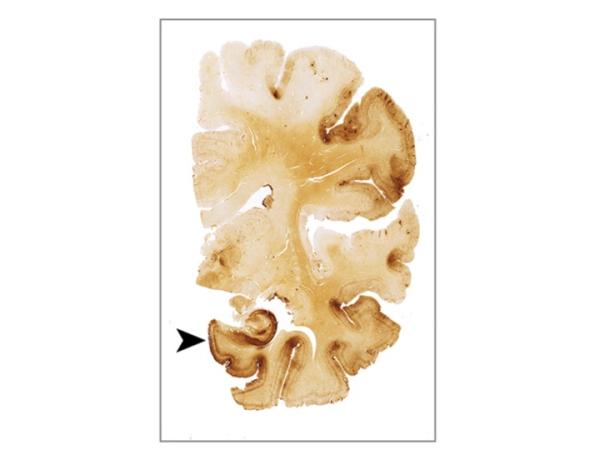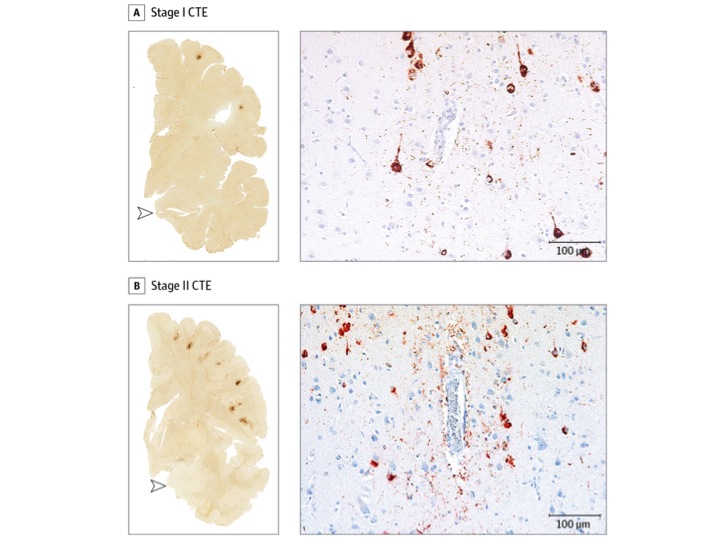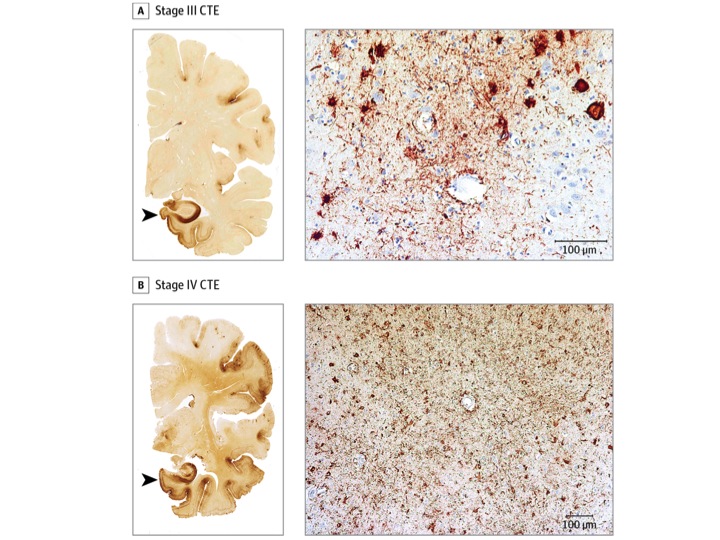
A study last week hit the news hard, like a linebacker, on the topic of Chronic Traumatic Encephalopathy (CTE) and football. The media jumped on it, some of the results were blown out of proportion, and the take home message became blurry.
Regardless, what came through the noise of the splashy headlines is that 1) some football players suffer from CTE and 2) the longer they play, the worse it is.
CTE has been controversial since it was discovered in 2005. Although it has been loosely recognized for the last century, as 'punch drunk syndrome', and known mostly to the boxing community - with research under our belts, our understanding of CTE is becoming clear.
CTE is a disease of the brain that happens after repetitive brain trauma. It is progressive and degenerative - meaning that the symptoms only get worse over time - not better. It is caused by both concussions and non-concussive blows to the head. The symptoms of CTE are similar to other neurodegenerative diseases and include memory loss, confusion, impaired judgment, impulse control problems, aggression, depression, anxiety, suicidality, parkinsonism, and progressive dementia.
The brains tell the real story, though. Post-mortem brains are analyzed by looking for tell tale signs of brain injury (seen below.) The brain of someone who has CTE looks different under the microscope than a normal brain. The brain trauma creates a destruction of the tissue of the brain, one of the hallmarks of which is a protein called Tau. In the figures below, the presence of Tau is marked by the dark brown color. The more Tau, the worse the symptoms.
There are four stages of CTE. The levels go from mild (I) to severe (IV) can be seen in the figures below. The images on the left are a slice of the whole brain. The image on the right is a magnified (or zoomed in) image of the slice on the left. The pictures below are from the paper released last week in JAMA that analyzed the brains of football players. The stage III and IV brains are from former NFL players.


It is this Tau protein buildup that, along with the symptoms of CTE, create a CTE diagnosis. CTE is not the same as Alzheimer's Disease (AD) or Parkinson's Disease (PD). For one, the symptoms of CTE generally come about earlier (in one’s 40s) than those of other diseases such as AD or PD. Also, the symptoms of CTE go far beyond memory loss or lack of motor function - the primary symptoms of AD and PD respectively. The first symptoms of CTE generally involve challenges with judgment, reasoning, problem-solving, impulse control, and aggression.
But, CTE as a diagnosis is new and some people remain skeptical. In addition, CTE is emotional.
I grew up in a town outside of a professional football stadium. It wasn’t exactly "Friday Night Lights," but I loved football and had classmates with fathers in the Hall of Fame. But, the day that Junior Seau killed himself, I said enough is enough. Some players are even making the choice to leave the game behind.
Others are not as concerned. Just a few days ago, when asked about CTE at an event, New York Jets rookie defensive back Jamal Adams stated: "If I had a perfect place to die, I would die on the field."
Either way, CTE should not be taken lightly. It is not fully defined yet, nor is it fully understood and there is no treatment. Most diseases are not just a decade after their discovery. But, that does not mean that it is not real, worth studying and worth our attention.
References:
The CTE Center at the Boston University School of Medicine (http://www.bu.edu/cte/about/frequently-asked-questions)



